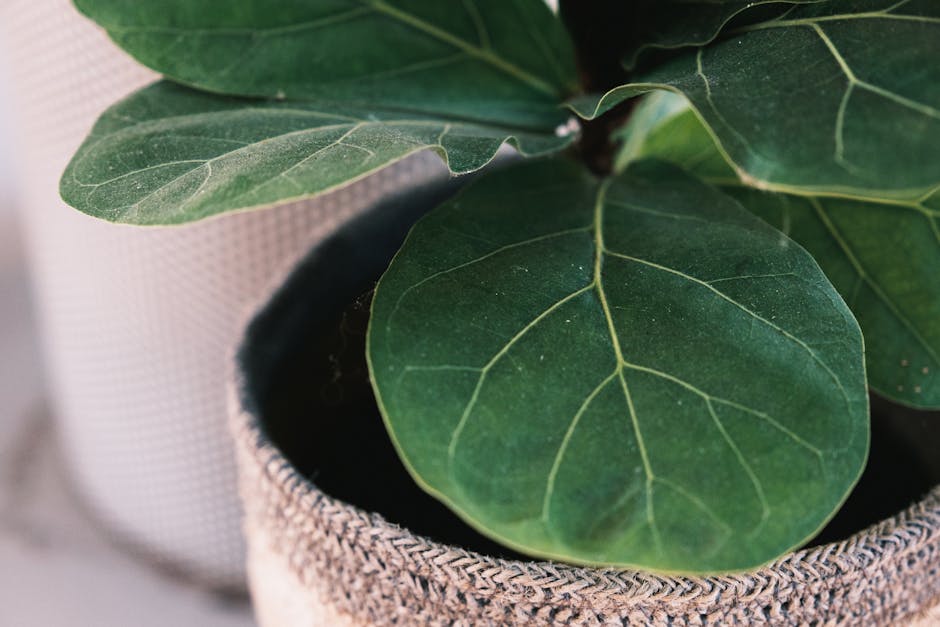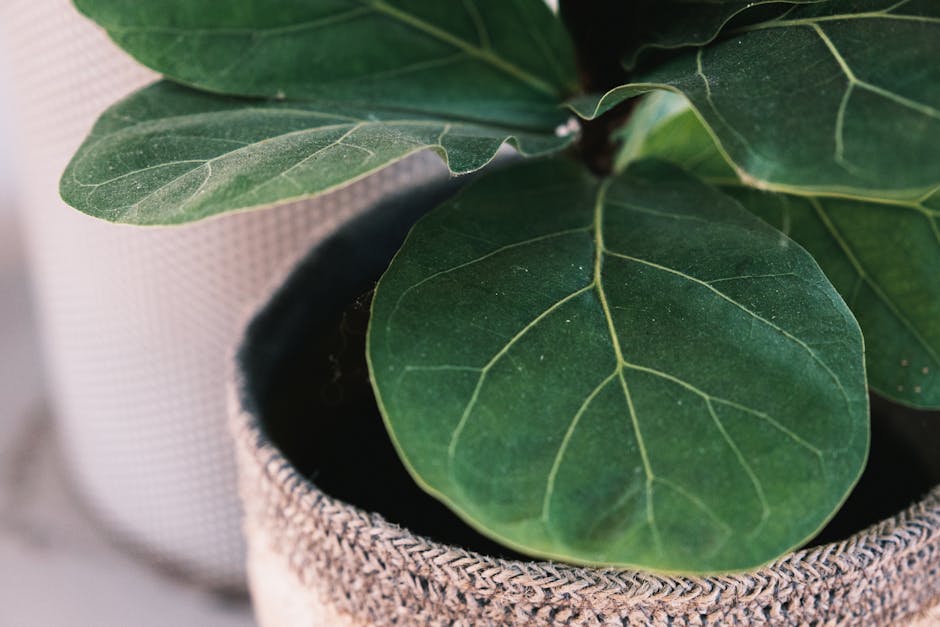Mastering the Art of Watering Fiddle Leaf Figs: A Comprehensive Guide

Watering your fiddle leaf fig may seem like a simple task, but it’s actually an art that requires a bit of finesse. This tropical plant, known for its large, glossy leaves, is a popular choice for indoor greenery. However, it can be a bit finicky when it comes to its watering needs. Overwatering or underwatering can lead to a variety of problems, including leaf drop, root rot, and even plant death. But don’t worry, with a little knowledge and practice, you can master the art of watering your fiddle leaf fig and keep it thriving.
Firstly, it’s important to understand that fiddle leaf figs, like all plants, don’t have a one-size-fits-all watering schedule. The frequency of watering will depend on several factors, including the size of the plant, the size of the pot, the type of soil, the humidity level, and the amount of light the plant receives. As a general rule, fiddle leaf figs prefer to dry out a bit between waterings, so it’s better to err on the side of underwatering rather than overwatering.
To determine when your fiddle leaf fig needs water, you can use the “finger test”. Simply stick your finger about an inch into the soil. If the soil feels dry at that depth, it’s time to water. If it still feels moist, wait a few more days and check again.
When it comes to the actual watering process, there are a few key steps to follow. Start by watering slowly at the base of the plant until water begins to drain out of the bottom of the pot. This ensures that the water is reaching the root system and not just wetting the surface of the soil. Once water starts to drain, stop watering and let the plant sit for a few minutes to allow excess water to drain away. Never let your fiddle leaf fig sit in standing water, as this can lead to root rot.
After watering, it’s a good idea to check the moisture level of the soil again. If the top inch of soil is still dry, you may need to water a bit more. If it’s soaking wet, you’ve probably watered too much and should let the plant dry out a bit before watering again.
In addition to regular watering, fiddle leaf figs also benefit from occasional misting. This helps to increase humidity around the plant, which can be particularly beneficial in dry indoor environments. However, be careful not to overdo it, as too much moisture can lead to fungal problems.
Finally, remember that your fiddle leaf fig’s watering needs may change with the seasons. In the warmer, brighter months, the plant will likely need more water. In the cooler, darker months, you can cut back on watering.
Mastering the art of watering your fiddle leaf fig may take a bit of trial and error, but with patience and careful observation, you can keep your plant healthy and happy. Remember, when in doubt, it’s better to underwater than overwater. And most importantly, enjoy the process! Caring for plants is a rewarding hobby that can bring a bit of nature’s beauty into your home.
Unlocking the Secrets of Proper Hydration for Your Fiddle Leaf Fig
Unlocking the secrets of proper hydration for your Fiddle Leaf Fig can be a game-changer in your plant parenting journey. This tropical beauty, with its large, glossy leaves, is a popular choice among indoor plant enthusiasts. However, it can be a bit finicky, especially when it comes to watering. With the right techniques, you can ensure your Fiddle Leaf Fig thrives and flourishes.
Firstly, it’s important to understand that Fiddle Leaf Figs, like all plants, have a unique watering rhythm. They don’t appreciate a one-size-fits-all approach. Instead, they prefer a watering schedule that’s tailored to their specific needs. This means you’ll need to pay close attention to your plant’s signals and adjust your watering routine accordingly.
One of the most common mistakes plant owners make is overwatering. Fiddle Leaf Figs are native to the tropical rainforests of West Africa, where they’re accustomed to a cycle of heavy rain followed by a period of dryness. Therefore, they prefer their soil to dry out a bit between waterings. Overwatering can lead to root rot, a deadly condition that can quickly kill your plant. To avoid this, it’s best to wait until the top inch or two of soil is dry before watering again.
When it’s time to water, do so thoroughly. This means you should water until you see it start to drain out of the bottom of the pot. This ensures that the water reaches the plant’s root system, which is essential for its health and growth. However, don’t let your plant sit in standing water. After watering, make sure to empty the drainage tray. Fiddle Leaf Figs don’t like “wet feet,” and sitting in water can lead to root rot.
The quality of water you use can also impact your Fiddle Leaf Fig’s health. These plants are sensitive to chemicals often found in tap water, such as chlorine and fluoride. If possible, use filtered, distilled, or rainwater. If you must use tap water, let it sit out overnight to allow some of the chemicals to evaporate.
Temperature and humidity also play a role in your Fiddle Leaf Fig’s watering needs. These plants thrive in warm, humid environments. If your home is dry, you may need to water more frequently. Conversely, if you live in a humid climate, you may need to water less often. A humidity tray or a room humidifier can help create the ideal environment for your plant.
Lastly, remember that your Fiddle Leaf Fig’s watering needs will change with the seasons. During the growing season (spring and summer), your plant will need more water. In the fall and winter, when growth slows, you can cut back on watering.
In conclusion, proper watering of your Fiddle Leaf Fig involves more than just pouring water into a pot. It requires careful observation, understanding your plant’s unique needs, and adjusting your care routine accordingly. With these tips in mind, you can master the art of watering your Fiddle Leaf Fig, ensuring it remains a vibrant and healthy addition to your indoor garden.

